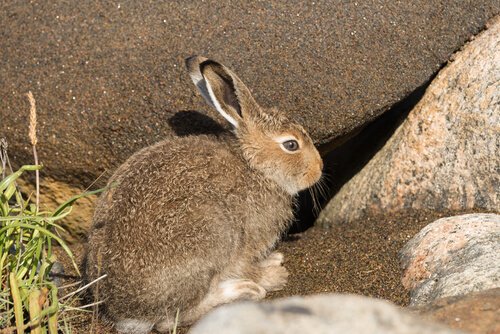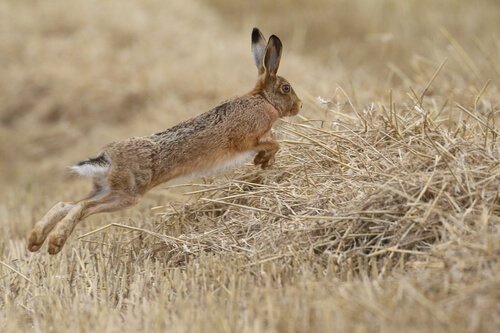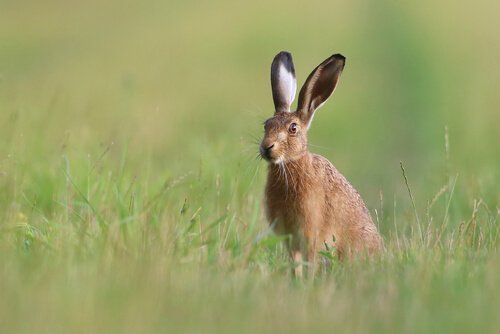The Hare, In Danger Of Extinction

The hare is a mammal that belongs to the same family as the rabbit. Hunting them for sport is very popular in Europe and South America. This has become one of the main reasons why they’re are now in danger of extinction.
Despite being famous for breeding quickly, hare numbers have considerably reduced. This is alarming to environmentalists and actions has to be taken to rescue this animal. Therefore, steps need to be taken to reduce man’s impact on their habitat.
The Hare
Hare’s tend to weight between three and four kilograms and vary in size depending on the species. The same can be said for the color and length of their hair, which they use as camouflage against predators.
There are around 80 different species of lagomorphs‘, which is name for this type of mammal. In Spain, there are many different species. However, in America, Asia, and Africa, especially in South Africa, there are other species with special traits.
When compared to rabbits, hares are much sleeker. They have longer legs, longer ears and are faster. Because of these traits, they were historically used as bait in greyhound racing.
Habits
Hares only eat plants and vegetables. Certain species of hares live in different areas. Some species are found in forests, valleys, or mountains. Normally they can be found in wide open fields.

They’re solitary animals which live in burrows underground and they only gather together during mating season. Although they can be very quick, the way they gather food makes them easy prey for eagles and lynxes. They’re also a particular favorite food for foxes and wolves.
Hares also very common to be appear in agricultural areas where they’re considered pests because they ruin the crops. Damaged crops have led many farmers to take action against them.
Why Is The Hare At Risk Of Extinction?
There are many reasons why the hare is at risk of extinction. However, the majority are related to mankind’s impact on the ecosystem. The main reasons are:
- Hunting. This is the main reason for a drop in the hare population. Although some countries have taken measures to control the sport, they continue being victims of indiscriminate hunting.
- Change of Habitat. As a result of the extension of livestock and agriculture.
- Activities to prepare the countryside for livestock have forced hares to seek other places to live where it’s harder for them to survive.
- The use of pesticides has also had an impact.
- Chemical products and traps are also causing a drop in numbers.
- Extermination measures. In sound countries, lagomorphs are considered a pest, particularly in agricultural areas. This has caused people to take action to wipe out them out, which in turn permanently sets off the ecosystem permanently.

How To Stop The Extinction of Hares
- Strict hunting regulations. Although many countries have laws about animal hunting, it’s important to make sure that they are reinforced.
- Any form of indiscriminate hunting changes the ecosystem’s natural cycle. By reducing the numbers of one species, changes the eating habits of other animals to the point they too could be at risk of extinction.
- Preserving the habitat. It’s important to limit the areas destined for farming, whether it be for crops or livestock, just in the same way that herds are separated to prevent the spread of diseases.
- Another problem is that livestock also eat bushes. Hares use bushes as shelter and refuge from predators.
- Exposure to other species has also left hares more likely to develop diseases.
- Help the animal reproduce. A hare can produce between three and nine leverets in one litter and can have up to four litters per year. The development of hare farms has helped reduce the risk of extinction.
